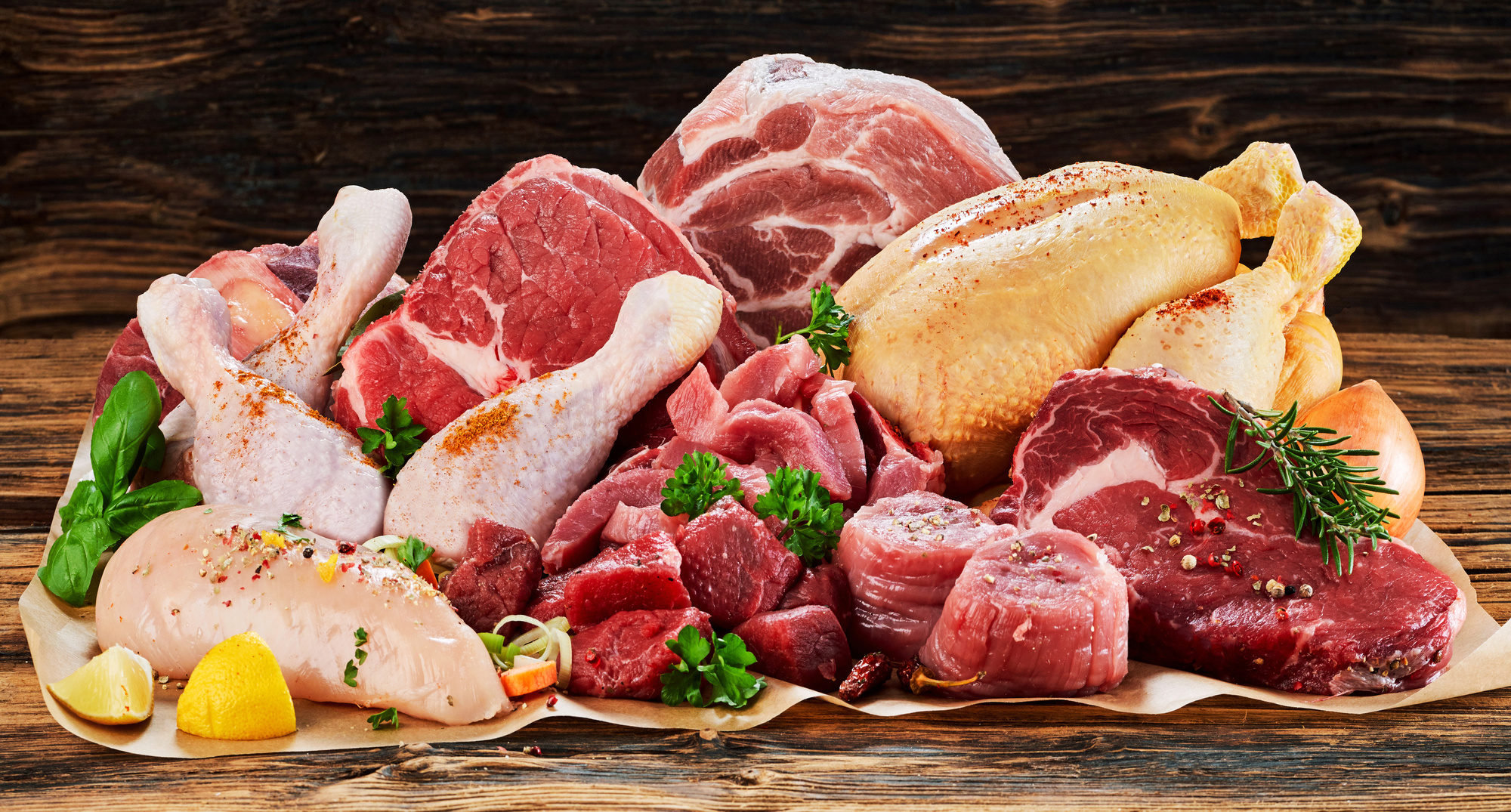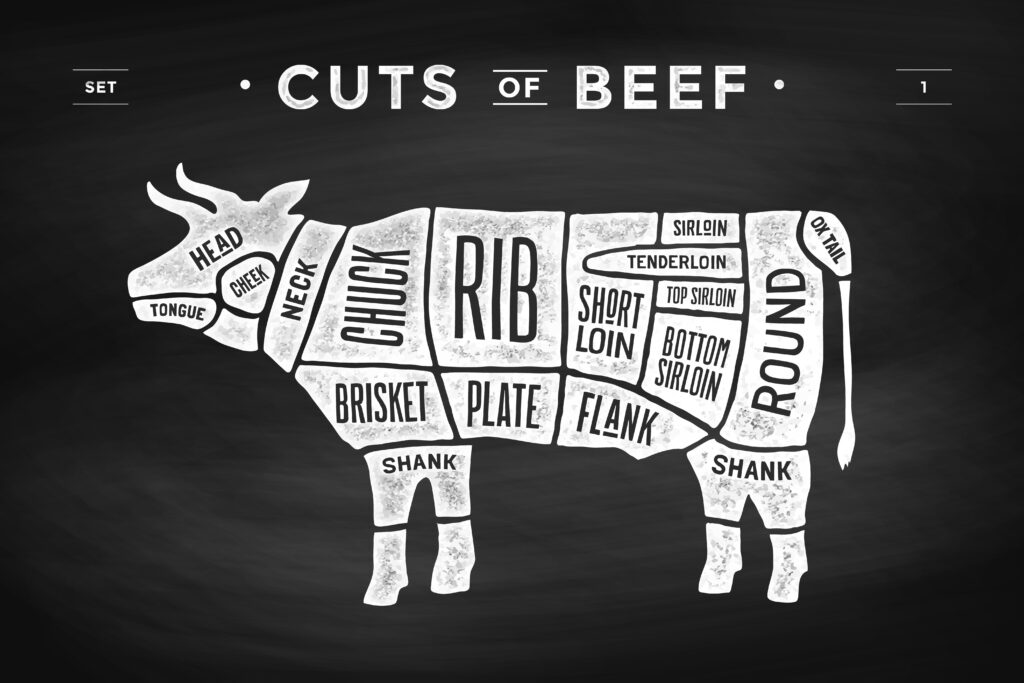
Craving a juicy steak that bursts with flavor in your next barbecue? Or perhaps you dream of perfectly marbled ground beef for the ultimate burger night?
In the vast U.S. meat industry, quality matters. But with so many options lining the grocery store shelves, from sausage to succulent lamb chops, how do you know you’re picking the best? Fear not! This guide unveils the secrets to identifying high-quality American meat from farm to table.
The Source: Traceability Matters in the U.S. Meat Industry
Where your meat comes from significantly impacts its quality. Look for labels mentioning the farm or ranch where the animal was raised within the current industrial system. This transparency allows you to research the farm’s practices—are the animals raised humanely? Do they have access to open pastures?
Ethical sourcing not only benefits animal welfare but often translates to tastier meat across the board, from juicy pork chops to flavorful venison steaks.
The Butcher: Your Meat Matchmaker in the United States
A good butcher is a goldmine of knowledge in the United States. They understand different cuts and cooking methods and can advise on the perfect selection for your needs, whether you’re grilling tri tips or braising a delicious lamb shoulder. Building a relationship with a local butcher allows you to ask questions and ensure you’re getting top-notch meat for every culinary adventure.
Subscription Boxes: Convenience with Caution
Meat subscription boxes have exploded in popularity, offering curated cuts delivered straight to your door. While convenient, choose wisely within the U.S. meat industry. Look for companies that source from reputable farms and prioritize quality like Good Chop. Having doubts? Don’t hesitate to browse online for Good Chop reviews for peace of mind.
Also, don’t be afraid to ask the subscription service questions about their sourcing and commitment to quality. After all, that delicious steak on your plate deserves a story you can be proud of.
The Breed: Knowing Your Cuts Across Species
Different breeds of cattle, pigs, lamb, and even poultry offer distinct flavors and textures. Consider your recipe: a slow-cooked pot roast benefits from well-marbled breeds like Angus beef, while fajitas shine with leaner cuts like flank steak, often sourced from breeds like Hereford.
Research popular breeds for each type of meat, from prized Angus cattle to heritage breeds of pork, to find the perfect match for your culinary desires.
The Cut: Choosing Wisely for Every Dish
Ever fantasized about a perfectly cooked steak that melts in your mouth? The secret weapon? Selecting the right cut! Think of it like choosing the right paintbrush for your masterpiece. A thick-cut ribeye boasts rich marbling, ideal for achieving a beautifully caramelized crust on the grill.
Craving a stir-fry bursting with flavor? A lean sirloin, sliced thin, cooks up lightning fast and won’t weigh down your dish. The right cut elevates your meal from good to gourmet, so don’t be afraid to explore!
The Color: A Visual Cue Across the Meat Counter
Fresh meat tells a story through its color. Bright red beef indicates a younger animal, while a deeper red suggests an older one. Both can be delicious but impact tenderness. Look for marbling—thin streaks of white fat—throughout the meat. This adds flavor and juiciness, especially in cuts like ribeye steaks and bone-in ham.
The Feel: A Textural Tell for Freshness
Ever gently press your finger against perfectly ripe fruit? That satisfying bounce back? High-quality meat offers a similar experience. Run your fingers across a steak at the butcher shop within the U.S. meat industry. It should feel firm, with a slight resistance.
Give it a gentle press. If it springs back immediately, you’ve got a fresh cut. Meat that feels spongy or leaves an indent after pressing might be past its prime. Trust your fingers—they’re a great first line of defense against picking up anything less than top-notch meat.

The Fat: Marbling Matters for Flavorful Meat
Marbling refers to the thin streaks of fat within the muscle tissue. This fat adds incredible flavor and juiciness to cooked meat, be it a decadent prime rib roast or a flavorful venison burger.
The amount of marbling varies depending on the cut, breed, and feeding practices within the United States. Look for an even distribution of marbling, not large chunks of fat, for optimal results.
The Label: Deciphering the Code in the U.S.
Labels can be overwhelming, but they hold valuable information. Look for keywords like ‘grass-fed,’ ‘pasture-raised,’ or ‘humanely raised.’ These terms often indicate higher quality meat from animals raised on natural diets across the United States, from cattle and pigs to chickens and lamb.
Also, check the USDA grading shield (Prime, Choice, Select)—a general indicator of marbling and tenderness for beef.
Final Thoughts
Navigating the U.S. meat industry can feel overwhelming. But with these tips in your back pocket, you’re well on your way to becoming a meat maestro! Elevate your next meal, trust your instincts, explore new cuts, and savor the delicious rewards. Happy grilling!

